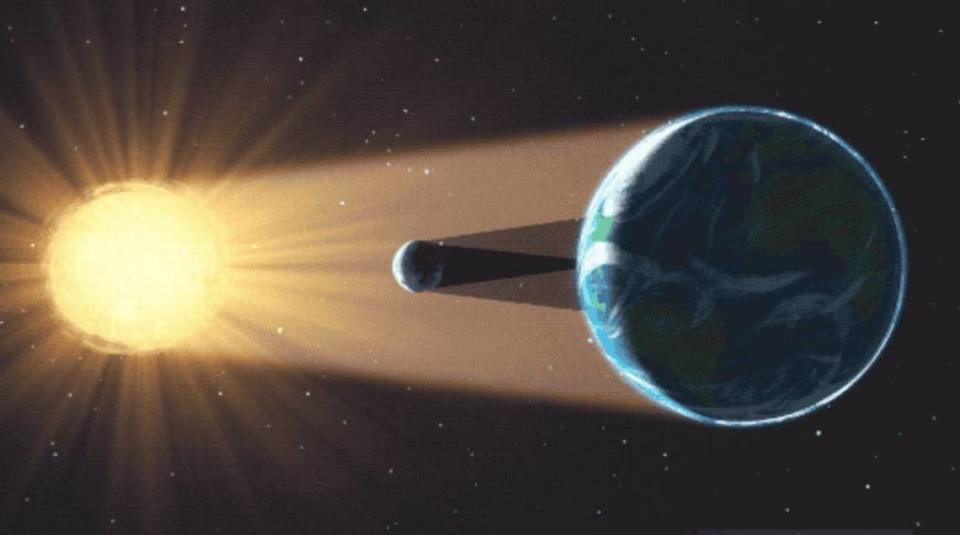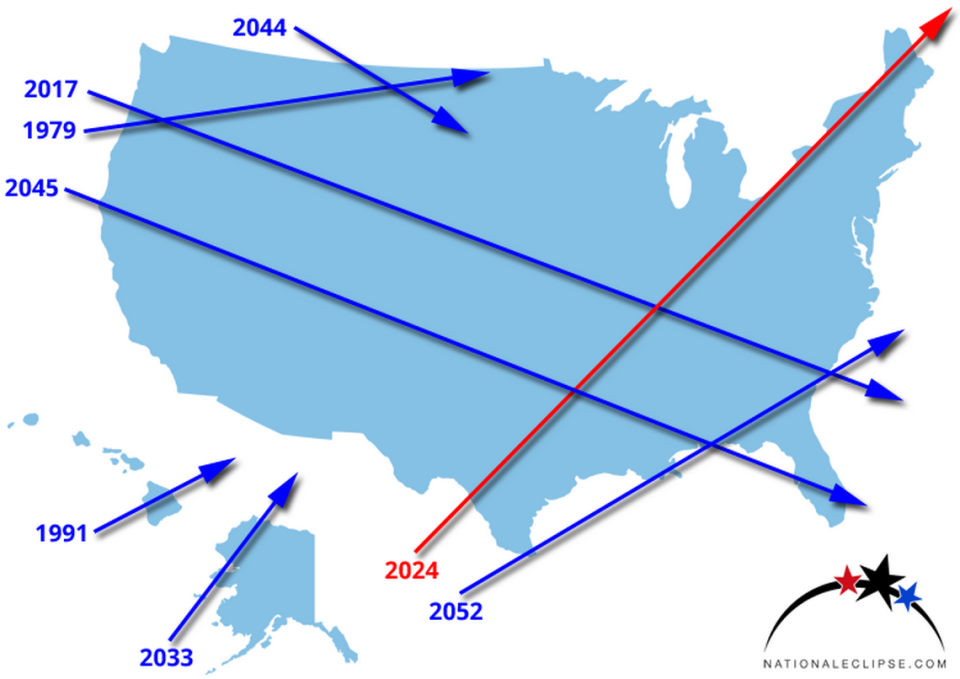Want to see the solar eclipse over KC this weekend? Here’s when, and how to do it safely
A partial solar eclipse will be seen in the skies over Kansas City Saturday.
But you may want to pick up some safety equipment if you plan on checking it out.
A solar eclipse occurs when the Earth, moon and sun align so that the moon sits in the middle of the three, at least partially blocking the sun from the point of view of a person on the planet, according to NASA.
Saturday’s event will be an annular solar eclipse, meaning the moon will partially obscure the sun so that viewers from some vantage points will see a “ring of fire” around the moon.
That ring around the edge of the sun won’t be visible from Kansas and Missouri. Observers in Kansas City and the surrounding region will see around 61% of the sun blocked out.
On Saturday, watch parties are being held at Union Station and at the University of Kansas.
In Kansas, the partial eclipse starts about 10:16 a.m. and lasts until 1:24 p.m. In Missouri, it lasts from about 10:24 a.m. to 1:33 p.m.
It’s important to remember that even in a partial eclipse, it is not safe to look directly at the sun without proper eye protection.
Here’s what you need to know if you want to see this rare event.
Here is some information about the upcoming solar eclipse this Saturday! It is important that you find ways to view the eclipse SAFELY. Here is a NASA link that provides more safety information for when you are viewing solar eclipses: https://t.co/f6IDzpF4yd #kswx pic.twitter.com/Hqr8gLzulU
— NWS Wichita (@NWSWichita) October 9, 2023
What equipment do I need to protect my eyes during an eclipse?
You can buy eclipse glasses from retailers online like Alpine Astronomical and My Science Shop or in stores like Home Depot, Lowes and Walmart.
You can also make your own solar viewer by taking a cardboard box and putting a piece of white paper on the back inside wall, then making a pinhole on the other side of the box so light can pass through the hole and onto the paper.
NASA says that you must look through safe solar viewing glasses or a safe handheld solar viewer when watching a solar eclipse directly with your eyes.
You should not look at the “sun through a camera lens, telescope, binoculars or any other optical device while wearing eclipse glasses or using a handheld solar viewer,” NASA says. “The concentrated solar rays will burn through the filter and cause serious eye injury.”
The American Astronomical Society recommends that you avoid buying the eclipse glasses on sites like Amazon and eBay, since those may not have been thoroughly tested.
Where can I watch the eclipse in Kansas City?
The eclipse will be visible to varying extents across North America and elsewhere, but a few places in the Kansas City area are hosting watch parties Saturday.
Science City at Union Station is hosting a watch party from 10 a.m. to 2 p.m. at Haverty Family Yard, where visitors can look through telescopes with the Arvin Gottlieb Planetarium team members.
Union Station is giving free pairs of the special safety-viewing glasses to the first 1,000 visitors. Visitors need a Science City ticket, which costs $16 or free for Union Station members.
At the University of Kansas in Lawrence, the Department of Physics & Astronomy is inviting the public to watch the partial solar eclipse from 11 a.m. to 1 p.m.
The university will have department telescopes set up for safe viewing of the eclipse just outside Malott Hall’s north side, located near 1251 Wescoe Hall Drive.
What is an annular solar eclipse?
An annular eclipse, like the one expected Saturday, happens when the moon passes between the sun and Earth, at or near its farthest point from Earth, according to NASA.
The moon appears smaller than the sun since it’s farther away from Earth and it doesn’t completely cover the sun. This is why you might see what some call a “ring of fire” around the moon.

It will be the first time an annular — or ring-shaped — eclipse has appeared over the United States since May 2012. And it will be the first solar eclipse of any kind since 2017’s total eclipse.
There are four types of solar eclipses: total, partial, annular eclipse and hybrid.
When is the next solar eclipse?
If you miss this solar eclipse, there’s a six-month wait for the next one. A total solar eclipse happens on April 8, 2024.
The path enters the United States through the Mexico-Texas border and travels northeast, through Arkansas, Missouri and into the northeast U.S.
It’ll be a partial solar eclipse for Kansas City residents, as the city will be outside the path.
The city of Poplar Bluff in southeast Missouri will be right in the path and will experience the totality, according to Time and Date, a tracking site for time zones, the weather and sun and moon locations.


